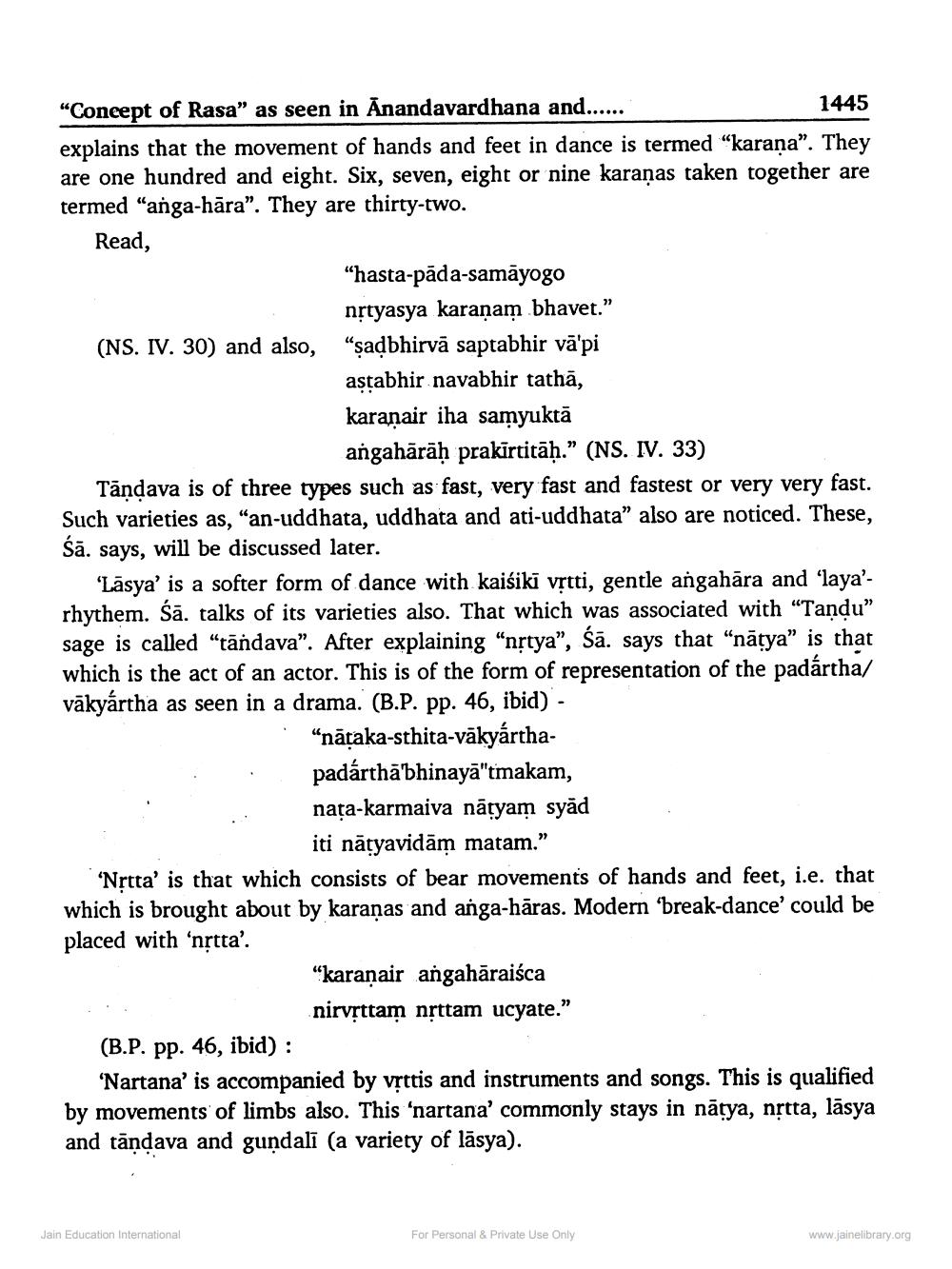________________
"Concept of Rasa” as seen in Anandavardhana and......
1445
explains that the movement of hands and feet in dance is termed "karana". They are one hundred and eight. Six, seven, eight or nine karanas taken together are termed "anga-hāra”. They are thirty-two. Read,
“hasta-pada-samayogo
nộtyasya karaṇam bhavet.” (NS. IV. 30) and also, “sadbhirvā saptabhir vā'pi
astabhir navabhir tathā, karanair iha samyuktā
angahārāḥ prakīrtitāḥ.” (NS. IV. 33) Tāņdava is of three types such as fast, very fast and fastest or very very fast. Such varieties as, "an-uddhata, uddhata and ati-uddhata" also are noticed. These, Śā. says, will be discussed later.
'Lāsya' is a softer form of dance with kaisiki vrtti, gentle angahāra and 'laya'rhythem. Śā. talks of its varieties also. That which was associated with “Tandu” sage is called “tāndava”. After explaining “nộtya", Śā. says that “nātya” is that which is the act of an actor. This is of the form of representation of the padártha/ vākyártha as seen in a drama. (B.P. pp. 46, ibid) -
“nātaka-sthita-vākyárthapadárthā'bhinayā"tmakam, nața-karmaiva nāryam syād
iti nāțyavidām matam." 'Nștta' is that which consists of bear movements of hands and feet, i.e. that which is brought about by karanas and anga-hāras. Modern 'break-dance' could be placed with 'nţtta'.
“karanair angahāraiśca
nirvșttam nșttam ucyate.” (B.P. pp. 46, ibid) :
'Nartana' is accompanied by vrttis and instruments and songs. This is qualified by movements of limbs also. This 'nartana' commonly stays in nātya, nrtta, lāsya and tāņdava and gundali (a variety of lāsya).
Jain Education International
For Personal & Private Use Only
www.jainelibrary.org




